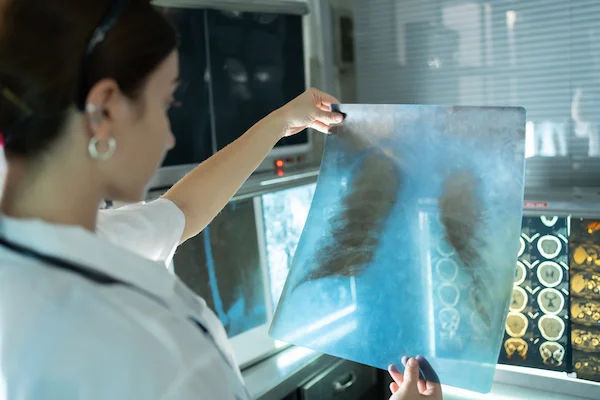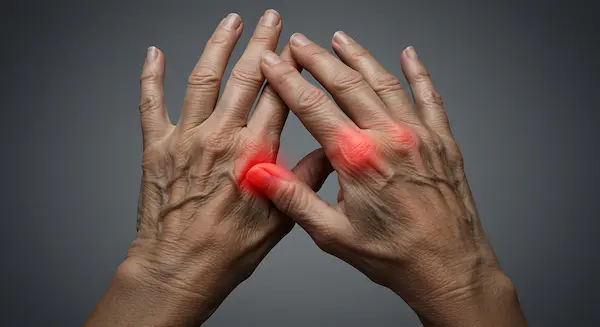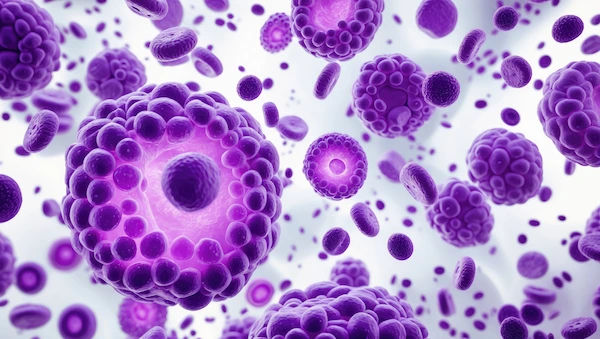Guide to Neurosciences Interventional Neurology
Know about the interventional neurology, what it is, signs, symptoms, causes, risks and treatment options.

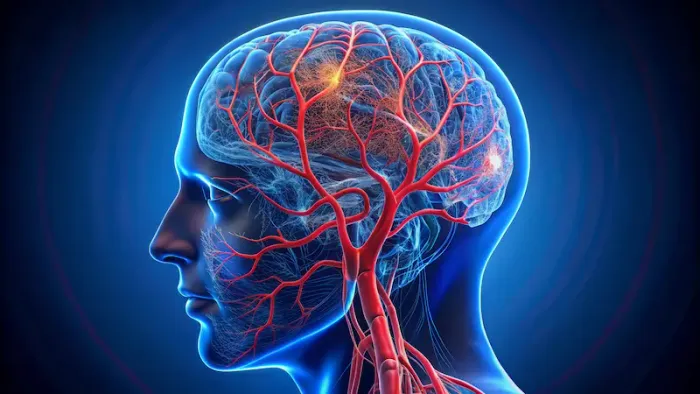
Introduction
If a blood vessel in the brain clogs or bursts, minutes matter. Interventional neurology, sometimes called endovascular neurosurgery, uses tiny catheters, stents, and coils to treat stroke, aneurysms, and other blood vessel problems from inside the artery, often without any open surgery. This clear, step-by-step guide to neuroscience's interventional neurology helps you recognise urgent symptoms, understand the most common conditions and procedures (like mechanical thrombectomy, aneurysm coiling, and carotid stenting), weigh benefits and risks, and know how to prepare and recover. You’ll also see what the strongest clinical trial evidence shows, how to choose a centre, and which questions to ask your team. If you’re reading for a loved one or for yourself, you’ll find practical tips you can use today, plus links to reliable sources for deeper reading. Let’s start with the basics.
What Is Interventional Neurology?
Interventional neurology (also called endovascular neurosurgery or interventional neuroradiology) is a minimally invasive speciality that treats disorders of the brain, head, and neck, and spine blood vessels using image-guided catheters and devices threaded through arteries, usually from the wrist or groin, rather than opening the skull. Think of it as “plumbing for the brain,” guided by advanced X-ray and CT/MRI imaging.
Consult Top Neurosurgeon for Personalised Advice
How it relates to other fields:
1. Neurology focuses on diagnosing and medically treating brain and nerve conditions. Stroke neurologists often coordinate emergency triage and medical therapy.
2. Neurosurgery traditionally performs open operations (for example, aneurysm clipping). Many centres now have “endovascular neurosurgeons” who perform interventional procedures from inside the artery.
3. Neuroradiology provides imaging expertise; “interventional neuroradiologists” specialise in catheter-based treatments.
Why this approach matters:
1. Smaller incisions (or a needle puncture) can mean faster recovery, less pain, and shorter hospital stays.
2. Time-critical treatments like mechanical thrombectomy can restore blood flow and improve outcomes after ischemic stroke when delivered promptly.
3. Continuous innovation (e.g., flow diverter stents for complex aneurysms) expands what can be treated without open surgery.
Symptoms and When to Seek Help Now
Stroke warning signs: Use BE-FAST.
1. Balance: sudden loss of balance or coordination
2. Eyes: sudden vision loss or double vision
3. Face: drooping on one side
4. Arm: weakness or numbness, especially on one side
5. Speech: slurred speech or difficulty understanding
6. Time: call emergency services immediately
If any of these are present, even if symptoms improve—call your local emergency number and get to the nearest stroke-ready hospital. Clot-busting medication and mechanical thrombectomy are time-sensitive.
What is a TIA?
A transient ischemic attack (mini-stroke) causes short-lived symptoms but is a serious warning. Early evaluation can prevent a disabling stroke. This may include imaging of neck and brain arteries, heart rhythm checks, and risk-factor labs. If symptoms have resolved and it’s not emergent, you can consult a neurologist online with Apollo24|7 to triage next steps and schedule timely in-person care. If symptoms persist beyond two weeks or recur, consult a doctor online with Apollo24|7 for further evaluation.
Conditions Treated in Interventional Neurology
1. Ischemic stroke (blocked artery): A clot blocks blood flow to part of the brain. Mechanical thrombectomy (clot removal) can be lifesaving and disability-sparing when delivered quickly to eligible patients.
2. Hemorrhagic stroke (bleeding): Often due to a ruptured aneurysm or arteriovenous malformation (AVM). Emergency catheter treatments can stop bleeding or reduce the risk of re-bleeding.
3. Brain aneurysm: A ballooning weak spot in an artery that can rupture. Treatments include aneurysm coiling, stent-assisted coiling, and flow diverter stents to reconstruct the vessel [11].
4. AVMs and dural arteriovenous fistulas (dAVFs): Abnormal connections between arteries and veins. Embolisation can reduce flow, prevent haemorrhage, or prepare for surgery/radiosurgery.
5. Carotid artery disease: Narrowing in neck arteries from plaque increases stroke risk. Options include carotid artery stenting (interventional) or carotid endarterectomy (surgery).
6. Intracranial stenosis: Narrowing inside brain arteries. Management often starts with aggressive medical therapy; stenting is reserved for select cases [7].
7. Chronic subdural hematoma: Slow blood collection on the brain’s surface, common in older adults. Middle meningeal artery (MMA) embolisation is an emerging minimally invasive option to reduce recurrence in selected patients.
8. Spinal vascular malformations and severe epistaxis (nosebleeds): Sometimes treated with targeted embolisation when other measures fail.
How the Procedures Work (And What You’ll Feel)?
Cerebral angiography
1. What it is: A dye (contrast) study of head and neck vessels under X-ray guidance. It maps arteries and veins in high detail to diagnose and plan treatment.
2. What you’ll feel: Local anaesthetic at the wrist or groin; you may feel a warm flush as contrast is injected. Many centres use light sedation. Most patients go home the same day for a diagnostic angiogram.
Mechanical thrombectomy for stroke
1. Tools: Stent retrievers (tiny wire-mesh devices that ensnare the clot) and/or aspiration catheters (vacuum suction).
2. Timeline: Door-to-puncture time is tracked to minimise brain loss. Imaging (CT, CTA, and sometimes perfusion maps) confirms blockage and salvageable brain tissue.
3. Experience: You may be awake or under anaesthesia, depending on stability and center practice. The goal is rapid reperfusion, restoring blood flow often in under an hour.
Aneurysm treatments
1. Coiling: Soft platinum coils fill the aneurysm sac to prevent blood flow into it.
2. Adjuncts: Stent-assisted coiling or balloon remodeling can help pack coils safely. Flow diverter stents reconstruct the parent artery to redirect flow away from the aneurysm for complex shapes.
3. Recovery: Many unruptured aneurysm procedures involve 1–2 hospital nights; ruptured cases require ICU care.
Carotid stenting and angioplasty
1. What it does: Widen a narrowed carotid artery in the neck; a small filter may be used to catch debris.
2. Who benefits: Patients at high surgical risk for endarterectomy or with anatomy favoring a stent, balanced against stroke risk during the procedure [6].
Embolization
• AVM/dAVF embolisation: Glue-like agents or tiny particles are delivered to abnormal vessels to reduce or stop shunting.
• MMA embolisation: For chronic subdural hematoma, blocking the MMA can reduce rebleeding risk and recurrence.
Safety, Risks, and Recovery
Any procedure has risks. Interventional neurology emphasizes safety through meticulous planning, imaging, and technique.
Common risks to discuss:
1. Bleeding or vessel injury: Rare but serious; monitored closely during and after the procedure.
2. Stroke during procedure: Possible in carotid stenting and other interventions; teams use filters, careful navigation, and meds to reduce risk [6–8].
3. Contrast reactions and kidney strain: Most reactions are mild; kidney function tests (creatinine) may be checked beforehand. Apollo24|7 offers convenient home collection for tests like creatinine, lipid panel, and HbA1c if your clinician recommends pre-procedure labs.
4. Radiation exposure: Kept as low as reasonably achievable (ALARA). Modern biplane angiography can lower dose by capturing images efficiently.
Recovery basics:
1. After thrombectomy: ICU or step-down monitoring for 24–48 hours. Team watches for brain swelling, blood pressure changes, or re-occlusion. Rehabilitation starts early.
2. After aneurysm coiling/stenting: Monitoring for vasospasm (in ruptures) and ensuring proper antiplatelet therapy adherence for stents.
3. After diagnostic angiography: Flat time and observation; most go home same day with activity restrictions for 24–48 hours.
Your Care Team and Technology
People you’ll meet:
1. Neurointerventionalist: A neurologist, neurosurgeon, or radiologist with fellowship training in catheter-based brain and spine procedures.
2. Stroke neurologist and emergency team: Coordinate rapid assessment, imaging, thrombolysis (clot-busting medication), and thrombectomy routing.
3. Neurocritical care: ICU specialists managing blood pressure, breathing, brain swelling, and complications.
4. Nurses, technologists, and anesthesiologists: The hands and eyes keeping you safe before, during, and after.
Technology that matters:
1. Biplane angiography suite: Twin X-ray cameras capture multiple angles, lowering radiation and improving precision.
2. Advanced CT/MR perfusion: Maps rescueable brain tissue (“penumbra”) to determine who benefits from thrombectomy in extended windows.
3. Telestroke: Remote neurologists evaluate scans and symptoms to activate thrombectomy-ready centres quickly, a lifeline for communities without on-site specialists.
Preparing for a Procedure
Your pre-procedure checklist:
1. Medications: Tell your team about blood thinners (aspirin, clopidogrel, DOACs), diabetes medications (especially metformin around contrast), and allergies (iodine/contrast/shellfish).
2. Fasting: Follow instructions on when to stop eating and drinking.
3. Labs: Kidney function, blood counts, and clotting tests may be ordered. Apollo24|7 can arrange home collection for routine labs if clinically appropriate.
4. Imaging: Bring prior CT/MRI/MRA/CTA on a USB if available.
5. Logistics: Arrange a ride home for same-day procedures; pack an overnight bag if an intervention is planned.
Costs and insurance:
1. Coverage varies by procedure and plan. Carotid stenting, aneurysm coiling, and thrombectomy are often covered when medically indicated.
2. Ask for a written estimate and discuss device costs (stents, coils) and potential ICU stay. Many hospitals have financial counselors to help.
Life After: Rehabilitation and Prevention
Recovery is a journey, not a straight line. Your plan will likely include:
1. Rehabilitation: Physical, occupational, and speech therapy often starts in the hospital. Early, intensive rehab improves outcomes after stroke.
2. Medications: Antiplatelets/anticoagulants to prevent clots, statins for vascular protection, and personalized blood pressure targets.
3. Lifestyle: Stop smoking, limit alcohol, follow a Mediterranean-style diet, and aim for regular activity. Track sleep and treat sleep apnea if present.
4. Follow-up imaging: MRA/CTA or catheter angiography may be scheduled to confirm aneurysm occlusion or stent patency.
5. Risk-factor labs: Lipids, HbA1c, and kidney function help tailor prevention; Apollo24|7 offers home collection for many of these tests, which can support adherence.
Choosing a Center (And What to Ask)
1. Certification: Comprehensive Stroke Centers and Thrombectomy-Capable Stroke Centers meet staffing, imaging, and performance standards for advanced stroke care [1].
2. Volume and outcomes: Ask how many procedures the team performs annually and what their complication and functional outcome rates are.
3. Speed and systems: Ask about door-to-needle and door-to-puncture times, telestroke capabilities, and 24/7 coverage.
4. Multidisciplinary care: Availability of neurocritical care and rehab under one roof can smooth recovery.
Myths vs Facts
1. Myth: “If symptoms go away, it’s fine.” Fact: TIAs often predict a major stroke—get evaluated quickly.
2. Myth: “Open brain surgery is the only option for aneurysms.” Fact: Many aneurysms are treated with coils or flow diverters from inside the artery [11].
3. Myth: “You’re too late after 3 hours.” Fact: Selected patients benefit from thrombectomy up to 24 hours after onset with imaging guidance [2–3].
4. Myth: “Stents fix all narrowings.” Fact: For some intracranial stenosis, medical therapy outperforms stenting [7].
Conclusion
Interventional neurology has transformed how we treat strokes, aneurysms, and other complex neurovascular problems, often replacing open surgery with a tiny puncture and a catheter. The strongest evidence supports rapid, system-based care: quick recognition, fast imaging, smart selection, and timely procedures like mechanical thrombectomy. Many aneurysms are now safely coiled or diverted, and some problems once managed only with surgery can be treated from the inside. Yet the right choice is always personal, shaped by your symptoms, timing, imaging, overall health, and goals.
If you or a loved one shows BE-FAST stroke signs or a thunderclap headache, act now and call emergency services. If you’re past the crisis and seeking guidance, bring this article to your next appointment and use the questions we listed. For non-urgent issues, consult a neurologist online with Apollo24|7 to discuss symptoms, plan tests, or arrange follow-up care.
Consult Top Neurosurgeon for Personalised Advice
Consult Top Neurosurgeon for Personalised Advice

Dr Debnath Dwaipayan
Neurosurgeon
9 Years • MBBS, MS(Gen. Surgery), DrNB (Neurosurgery)
Delhi
Apollo Hospitals Indraprastha, Delhi

Dr. Ganeshgouda Majigoudra
Neurologist
10 Years • MBBS, MD ( GENERAL MEDICINE) DM (NEUROLOGY)
Bengaluru
Apollo Clinic, JP nagar, Bengaluru

Dr. Aditendraditya Singh Bhati
Neurosurgeon
18 Years • MBBS(2004), DNB Neurosurgery(2014); MNAMS; Fellow Neuroendoscopy
Delhi
Apollo Hospitals Indraprastha, Delhi
(100+ Patients)

Dr. E Prabhakar Sastry
General Physician/ Internal Medicine Specialist
40 Years • MD(Internal Medicine)
Manikonda Jagir
Apollo Clinic, Manikonda, Manikonda Jagir
(150+ Patients)
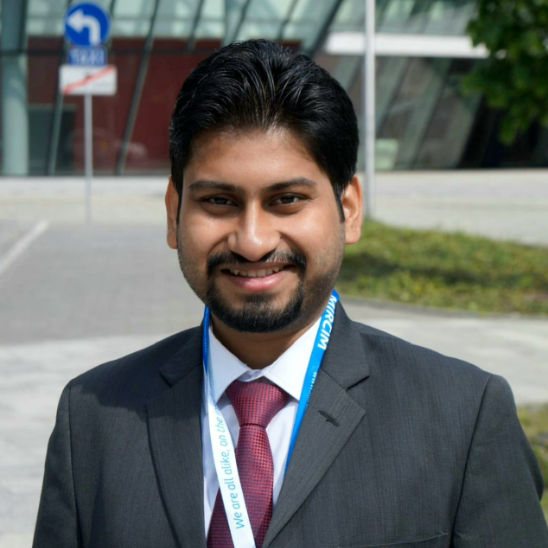
Dr. Uddalak Chakraborty
Neurologist
8 Years • MBBS, MD(GENL.MED.),DM(NEUROLOGY)
Kolkata
MCR SUPER SPECIALITY POLY CLINIC & PATHOLOGY, Kolkata
Consult Top Neurosurgeon for Personalised Advice

Dr Debnath Dwaipayan
Neurosurgeon
9 Years • MBBS, MS(Gen. Surgery), DrNB (Neurosurgery)
Delhi
Apollo Hospitals Indraprastha, Delhi

Dr. Ganeshgouda Majigoudra
Neurologist
10 Years • MBBS, MD ( GENERAL MEDICINE) DM (NEUROLOGY)
Bengaluru
Apollo Clinic, JP nagar, Bengaluru

Dr. Aditendraditya Singh Bhati
Neurosurgeon
18 Years • MBBS(2004), DNB Neurosurgery(2014); MNAMS; Fellow Neuroendoscopy
Delhi
Apollo Hospitals Indraprastha, Delhi
(100+ Patients)

Dr. E Prabhakar Sastry
General Physician/ Internal Medicine Specialist
40 Years • MD(Internal Medicine)
Manikonda Jagir
Apollo Clinic, Manikonda, Manikonda Jagir
(150+ Patients)

Dr. Uddalak Chakraborty
Neurologist
8 Years • MBBS, MD(GENL.MED.),DM(NEUROLOGY)
Kolkata
MCR SUPER SPECIALITY POLY CLINIC & PATHOLOGY, Kolkata
More articles from General Medical Consultation
Frequently Asked Questions
Q1: What is the difference between interventional neurology and neurosurgery?
Interventional neurology (endovascular neurosurgery) treats brain vessel problems from inside the artery using catheters and imaging. Traditional neurosurgery involves open operations. Many centers offer both and choose the best option based on your case.
Q2: Who is eligible for mechanical thrombectomy for stroke?
Patients with a large-vessel occlusion on imaging, disabling symptoms, and within specific time windows (including up to 24 hours for select patients with perfusion imaging) may qualify. Eligibility is individualized based on imaging and clinical factors [1–4,10]. If symptoms persist beyond two weeks after a TIA or minor stroke, consult a doctor online with Apollo24|7 for further evaluation.
Q3: Is aneurysm coiling better than clipping?
For many ruptured aneurysms, coiling showed better outcomes in ISAT; however, aneurysm size, shape, location, and patient factors may favor clipping or flow diversion. A multidisciplinary team recommends the best approach for you [5,11].
Q4: What are the risks of a cerebral angiogram?
Risks include bleeding at the access site, contrast reaction, kidney strain, and very rarely stroke. Serious complications are uncommon in expert hands; discuss your personal risk and any allergies ahead of time [8,15].
Q5: How do I prevent another stroke after treatment?
Control risk factors (blood pressure, cholesterol, diabetes), take prescribed antiplatelets/anticoagulants, stop smoking, stay active, and attend rehab. Follow-up imaging may be needed. Apollo24|7 offers home collection for labs like lipids and HbA1c to help you stay on track.
